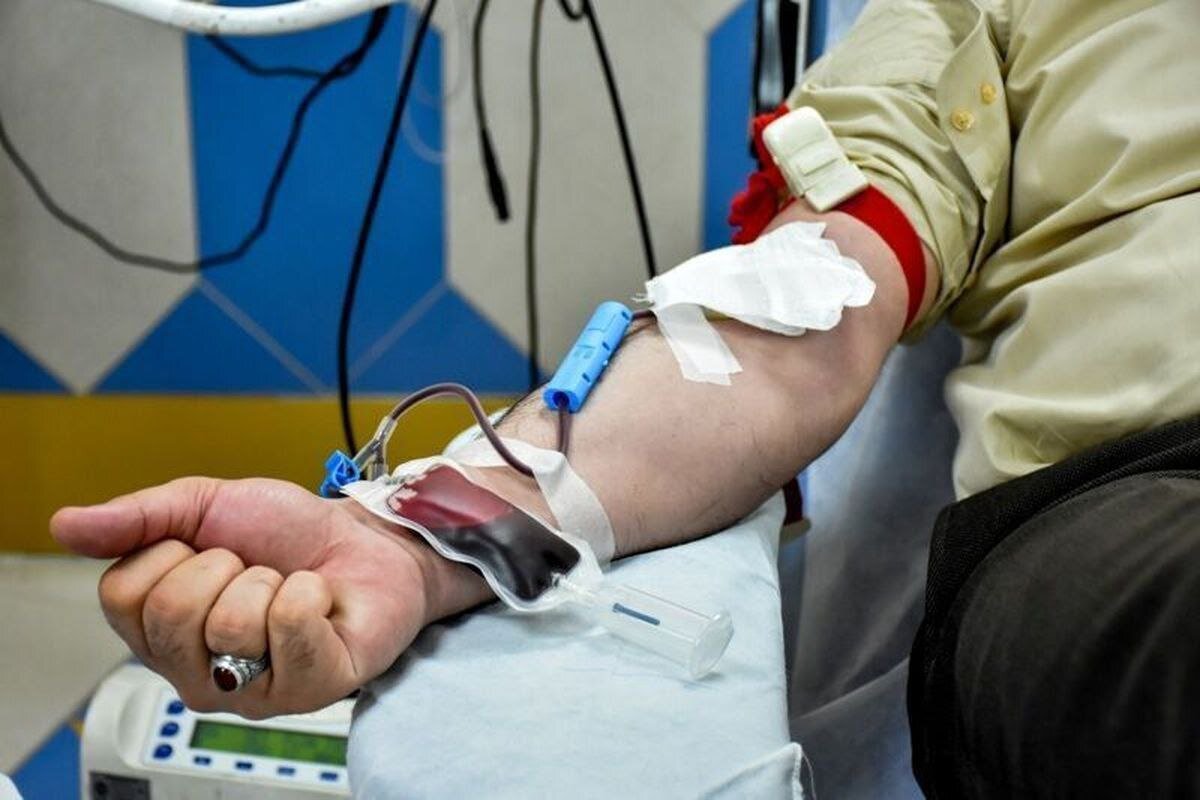Iranians donate 2% more blood in 11 months

TEHRAN – Blood donation in the country has increased by two percent since the beginning of the current Iranian year, March 20, 2024, till February 19.
A total of 2,186,260 blood units were donated over the mentioned period, the health ministry’s website quoted Bashir Haji-Beigi, the Blood Transfusion Organization spokesman, as saying.
The highest blood donation growth was recorded in the provinces of Kohgiluyeh-Boyerahmad (over 23 percent), Sistan–Baluchestan (almost 14 percent), and Alborz (around 9 percent),” Haji-Beigi said.
Tehran province accounted for roughly 17 percent of the total blood donation in the same period. Over the past month (from January 20 to February 18), some 360,655 blood units were donated in Tehran, he added.
Fars and Khorasan Razavi donated around 8 percent and 7 percent of the total blood donation in 11 months, respectively.
The official went on to say that the continuous blood donation growth rate in the country has increased to over 56 percent. The provinces of Semnan (around 69 percent), Yazd (about 68 percent), and Golestan (almost 66 percent) hold the highest rates for continuous blood donation, respectively.
Women’s share of blood donation in the country is still less than five percent, Haji-Beigi noted. North Khorasan and Lorestan (over 8 percent), and Sistan-Baluchestan and Qazvin (over 7 percent) provinces had the highest blood donation by women.
4.7% rise in blood donation yr/yr
A total of 2,327,997 Iranians donated blood over the past Iranian calendar year (March 2023-March 2024), an increase of 4.7 percent compared to the year earlier.
Tehran and Fars provinces made the largest contributions, accounting for more than 16 percent and more than 7 percent of the total blood donation, respectively, IRNA quoted Haji-Beigi as saying.
Last year, the highest growth in blood donation was recorded in the province of Lorestan with 22 percent, followed by North Khorasan with 16 percent, and Kohgiluyeh-Boyerahmad with approximately 13 percent.
The overall blood donation rate was over 54 percent in the country last year with Semnan (69 percent), Yazd (64 percent), and Qom (63 percent) provinces ranking the highest.
Women’s share of blood donation was equal to four percent.
WHO highlights Iran’s capacity
Jaffar Hussain, World Health Organization (WHO) Representative to Iran, has highlighted Iran’s capacity to serve as a model for other nations in the realm of blood transfusion and rare blood management.
Addressing National Rare Blood Day on January 22, the official praised the country’s steadfast commitment to equitable health care access, ensuring that no one is left behind, regardless of their blood type.
The official commended the country’s unwavering dedication to tackling the unique challenges surrounding rare blood, emphasizing the critical importance of collaboration, innovation and unwavering determination in this global endeavour, WHO website announced in a press release on January 27.
MT/MG
Leave a Comment